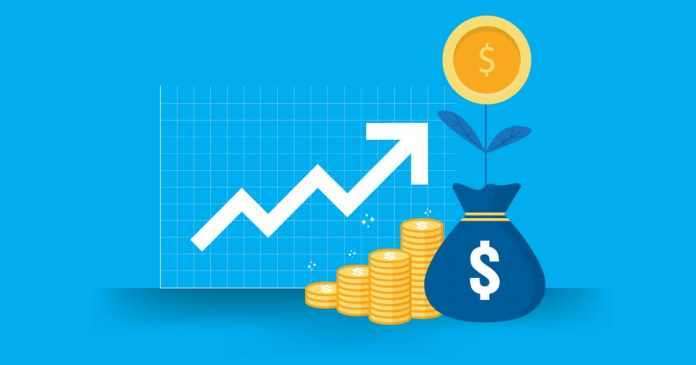Businesses need money to stay in the market. The main source of income is the profit from their products. It is not wise to assume that the company is making a profit. The experts rely on various financial ratios, such as return on investment capital (ROIC), ROCE, and ROI. These calculations help them know if they are on the right track. The investors evaluate the success or failure of a particular investment using these metrics. Understanding the differences between these various numbers is also vital.
Table of Contents
ROI and ROCE – A definition and introduction
Companies conduct their business to gather profit. However, the top brands do not get satisfied with the primary profit calculations. They want to determine success in a detailed manner. They aspire to figure out the role of their investment in daily processes and business expansion plans. The best analysts take the help of these calculations to estimate a company’s financial conditions.
They also make use of a more refined calculation called the return on investment capital. Before that, let us look at what ROI and ROCE do first:
ROCE is a profitability ratio that divides the profits before interest and tax by capital employed (CE). The CE dismisses liabilities but factors in the net profits. It is the total asset amount or the company’s available money.
A higher ROCE value means a healthy financial strength for the company. The ratio has to be higher than the cost of capital at the minimum. It is a useful metric for comparing capital-intensive businesses like Energy, Automobile, and Telecom.
ROI is also an equally popular measure for assessing business investments. It is the ratio that factors in cash flows and generates a percentage outcome.
(Profit from the investment – the cost of investment) / cost of investment.
If the result is greater than 0, then the company is profitable. If it is very high, then the business is effectively using its funding. But a negative value indicates poor management of the finances. It is instrumental in leading internal audits of each investment, process, etc.
Why calculate return on investment capital?
ROIC is also an essential indicator of business performance as it effectively measures the fund utilization (generated income). The invested capital is only a part of the total CE. But it is also the percentage of money actively invested in business operations. The following formula calculates ROIC.
Net profit after tax/ CE wherein the numerator is (net income – dividends).
It is possible to find the capital used in the business from the return on investment capital. It does not include non-active purchases like securities. Such assets are outside the business and hence ignored during the calculations. It is very efficient for evaluating the CE that is under a company’s control. It gives a general sense of how well the investment is making returns.
How to differentiate return on investment capital from ROI?
First, let us look at the main differences between ROIC and ROI. The former is a very advanced metric that is helpful for investors. It relates to the profits generated by the company’s assets. Since the denominator specifies the total money used, the company’s strength gets revealed.
In contrast, ROI can inform the review of a single investment. One can correctly evaluate the profit from a specific activity. For example, if a marketing program costs US$100 and returns US$120. Then ROI is 120 -100/100 or 20/100 or 20% returns on investment.
Say a company decides to start a new project to create a new product. It invests money and time to create the product. It distributes and sells this product to customers to generate profits. Such a gain or profit is the return on invested capital.
But if the company did not have enough money initially, it raises money by inviting various investors. Now, these individuals or companies receive ROI based on overall output. Both those private investors who invested in this project and the company will get project profit after the expenses.
ROIC and ROCE – Comparison and difference
If you consider ROIC and ROCE, there is a crucial difference here too. ROIC entirely relies on the invested capital alone. But ROCE also includes the CE in its denominator. Yes, both metrics are essential to determine payouts, company and investment performance, and future returns.
But the similarities end here as ROCE has more use. It factors in financial equity and total debt, but not the short-term liabilities. On the other hand, ROIC focuses more on the active business component of CE. So, it is a more efficient way to track the profits.
ROCE also calculates the ratio using the figures before tax. It is a necessary metric for the company executives to make decisions. But ROIC is more crucial from the point of view of the investors. They are more likely to show interest in payouts than day-to-day business activities. Also, it is useful in comparing two companies that work under the same tax bracket.
Similarities between ROI and return on investment capital
Businesses have to offer products and services to make profits. They rely on both fixed and variable costs to conduct daily activities. The fixed expenses cover infrastructural costs such as machines, vehicles, buildings, warehouses, etc.
The variable costs pertain to production and maintenance issues. They include raw material, power bills, labor costs, etc. Both types of expenses are vital for making a finished good or service. ROCE calculates the returns on fixed expenses. At the same time, ROI looks at gains from variable costs.
Both ROIC and ROI are essential ratios to calculate business profits. They are crucial for correctly assessing the company’s performance. Both measures convey information to the investors whether or not to invest in the business. The detail of these calculations is an essential factor in several financial decisions without too much guesswork.
Both values transparently report the net profits without any errors. Thus, the investors will know the exact returns they are going to receive from those investments. These metrics are also essential for business analysts to estimate future profits from their investments.


















